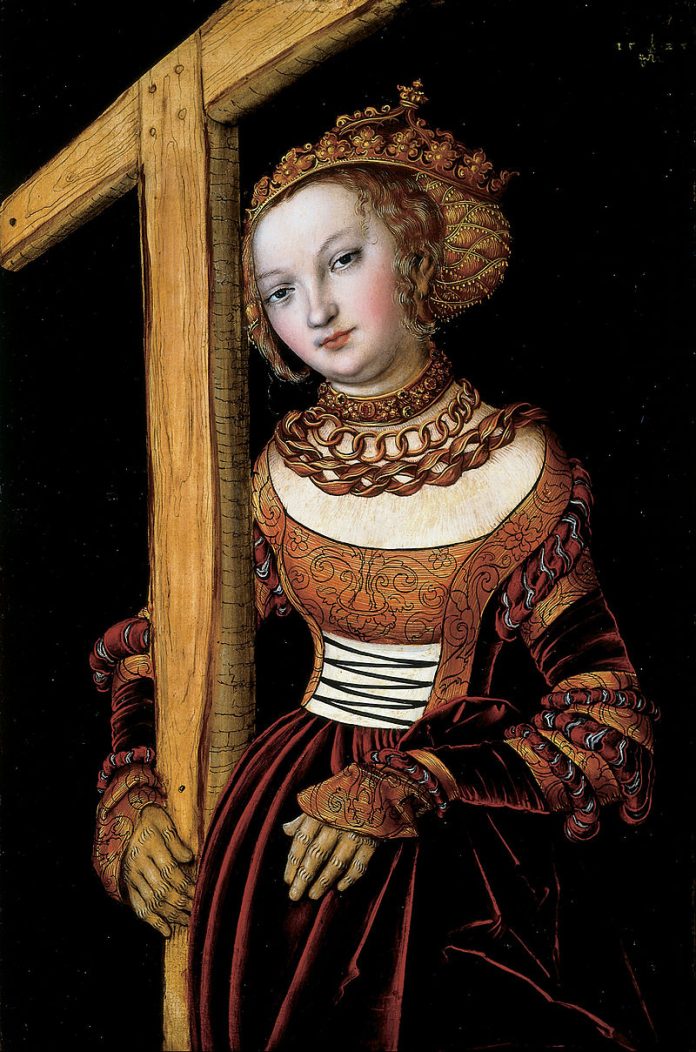
Saint Agapitus, an early Roman martyr (+274) was from the ancient family of Palestrina, from which, 1300 years later, would derive one of the greatest of the Church’s choral polyphonists, of eponymous name. Agapitus, who did not bear any children, was captured in the persecution of Aurelian, tortured – the statue shows him upside down, which may be the artist’s imagination – then thrown to the wild beasts, who refused to touch him. So, as was the wont in such cases, he was dispatched by decapitation.

wikipedia – creative commons
Today also marks the traditional commemoration of Saint Helena, wife of co-emperor Constantius Chlorus and the mother of the future Emperor Constantine, who would legalize Christianity in the Roman Empire with the Edict of Milan in 313, and call the Council of Nicaea in 325 to extirpate Arianism (even if his son, Constantius II, named after only grandad, would later reinstate and support the pernicious heresy). Helena also discovered, by means miraculous, the relic of the True Cross, yes, the whole Cross, on which was hung the Saviour of the World.
By legend, Helena was the daughter of an innkeeper in Albion – a British barmaid, if yoiu will – when she caught the eye of Constantius, and the rest is history, showing the spiritual fruit of a good and holy marriage. For a fuller treatment of the saint, replete with all the legends great and small, English novelist Evelyn Waugh wrote an entertaining novel simply titled, Helena, which comes recommended, as does most of the rest of his work.
Sources: wikipedia.org, catholic.org









